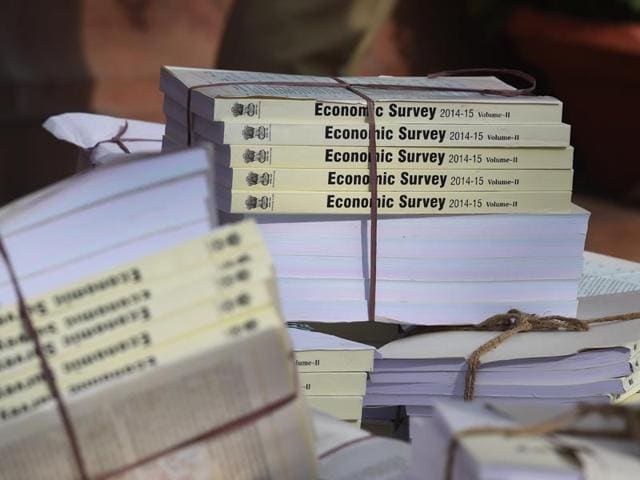Getting the economy back on track
Rating agency S&P has more faith in India’s polity than most others; it has forecast India’s GDP to grow by 7.9% in 2016-17. The Economic Survey puts it higher, at 8.5%. For this happy forecast the opposition parties need to adopt singer Pharrell William’s attitude in the song ‘Happy’ and be constructively, instead of obstructively, critical of Government policy.
Rating agency S&P has more faith in India’s polity than most others; it has forecast India’s GDP to grow by 7.9% in 2016-17. The Economic Survey puts it higher, at 8.5%. For this happy forecast the opposition parties need to adopt singer Pharrell William’s attitude in the song ‘Happy’ and be constructively, instead of obstructively, critical of Government policy.

The GDP growth is predicated on several factors, chief amongst which is greater employment opportunities. As mentioned in these columns, the agriculture sector contributes about 14% of GDP but supports over 50% of India’s population. The terms of trade for farmers are, thus, hugely adverse and can be addressed by either reducing the number of people dependent on agriculture (after providing alternate employment opportunities) or by increasing prices for their produce. The latter would impact inflation.
The jobs would necessarily have to come from industry and from services.
An impediment for industry to create more jobs is the Land Acquisition Act, which the Modi Government is trying to amend this, through an ordinance, to remove some of its unnecessary features. Industry is not averse to paying a fairer price to acquire the land but some provisions, makes the acquisition subject to the vagaries of both time and discretion.
According to a survey, the Land Acquisition Act is responsible for delaying a third of the top 100 industrial projects. The investment, if these stuck projects were facilitated, would be Rs 18 lakh crore. India just cannot afford to waste time to reduce bottlenecks for job creation, for fear of social unrest.
The state governments would also want to create jobs in their states, and so ought, truly, to be more supportive of sensible policy. The 14th Finance Commission has boosted the share of states in the revenue pool by 10% to 42%.
Whilst this reduces the elbow room for the finance minister in the Union Budget he will present tomorrow (this column is written a day prior) it means that state governments will now have monetary resources (hence no excuse for non performance) to implement schemes needed by their state. It would pressure state governments to perform.
It is from the service sector that a bulk of the new employment opportunities would be generated. It has a 65% share in GDP and provides employment to 31% of our population. The government is planning on creating 100 new smart cities, each with one million people, and the creation and management of these would provide large employment opportunities.
These cities would need to be connected by road and rail.
The Rail Budget has, importantly, increased the spend on investment by 52% to Rs 100 lakh crore. Indian Railways have not invested enough in expanding the rail network. Since Independence, India has added 12,000 km to its rail network, to reach 65,000 kms. (Some routes have more than one track, so the total km is 115,000). In contrast, China has added 78,000 km, to reach 100,000 km, over roughly the same period. Over the next five years, the total investment would be Rs 8.5 lakh crore. Railways are India’s largest employer.
Railway minister Prabhu has assumed that the benefit of low diesel prices would be available for the whole year. Over a year’s time, however, crude prices would rise and Prabhu’s calculations would go awry. Passenger fares have not been raised, though passenger traffic results in a loss. Prabhu will use technology to increase train speeds and will have public-private partnership for stations.
Faster trains are necessary not merely for convenience but as a means of decongesting cities. Imagine someone living within an hour’s train ride to work in Mumbai. Now imagine that the train can double its speed. The radius of residence with the same commuting time would widen considerably.
So, what will Jaitley pull out of his hat in tomorrow’s Budget? The reduction of 10% of revenue accruing to the Centre will test him sorely. He is expected to stick to his target of 4.1% fiscal deficit, and that would cheer investors. He is expected to announce a rollout of GST, which would further enthuse the market. However, in order to facilitate this rollout, he may be compelled to raise excise duties by some 2%, which would dampen investor enthusiasm.
The Sensex was flat last week. It is global money supply that is moving markets; witness Japan’s market at a 15 year high. So, if the Union Budget has some elements of the government’s vision, and is not a tinkerers budget, the market would be appreciative.
Stay informed on Business News, TCS Q4 Results Live along with Gold Rates Today, India News and other related updates on Hindustan Times Website and APPs



